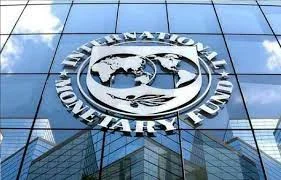Islamabad May 13 2025: A newly approved round of International Monetary Fund loans is likely to boost Pakistan’s foreign exchange reserves and ease concerns for defaulting on dollar debt, reported Bloomberg.
Meanwhile, the ceasefire agreed with India after the recent conflict has helped bolster national sentiment and is likely to support political stability. These two pieces of positive news not only provided a boost to the country’s financial assets on Monday, but also bode well for Pakistan’s economic recovery.
On May 9, the IMF Executive Board signed off on the immediate release of a second loan tranche under the current bailout program that allows authorities to draw about $1 billion. In addition, the fund also approved a new 28-month arrangement under the Resilience and Sustainability Facility for access to around $1.4 billion for building resilience against climate vulnerabilities and natural disasters. Pakistan is yet to begin receipt of these climate-focused loans.
The climate loans will help the country build the necessary infrastructure to offset the impact of droughts and floods, both frequent events. As an example, floods in 2022 cost the economy around $30 billion. The loans should also help Pakistan reduce the impact of variable water supplies after India suspended the Indus Water Treaty.
The ceasefire agreement, meanwhile, removes a large downside risk to our growth outlook by eliminating the threat of steep economic and defense costs imposed by a prolonged military conflict. A prolonged conflict could have pushed up defense spending sharply, resulting in the IMF program being shutdown and raising the likelihood of default.
We see no change to our growth projections on account of the limited duration of the conflict. In this regard, we expect growth to climb to 2.3% in fiscal 2026, from an expected 1.8% in the current year ending June, assuming the IMF loans keep flowing and the ceasefire remains in place.
The IMF’s decision to approve the loans suggests it is satisfied with the country’s progress under the current program. That includes achieving a primary balance surplus and reducing energy sector debt. This is in line with our base case for the government keeping the IMF program on track following efforts to raise taxes, widen the tax base and adjust electricity tariffs. Fitch Ratings upgraded the country’s sovereign rating on April 15 based on the country implementing the IMF’s suggested reforms. We think the IMF’s decision could also lead to rating upgrades by other agencies.
Uninterrupted IMF loans — and the rollovers/additional inflows from friendly countries that are conditioned on the these loans — are needed to avoid default over the medium term. The IMF estimates the country faces external financing requirements, which include the current account deficit and dollar debt repayments, of about $20 billion in fiscal year 2026 (starting July) and then $24 billion in fiscal 2027. Pakistan’s foreign exchange reserves stood at around $10 billion before the new IMF loans.
The IMF loans are also necessary for maintaining the momentum of the economic recovery, as they help fund imports of the additional raw materials needed for production.
This spate of good news should be positive for markets in the near term. The country’s KSE 30 benchmark stock exchange index jumped by around 9% on May 12 and the country’s dollar-bonds maturing in May 2027 gained 4%. The rupee was relatively unchanged.












